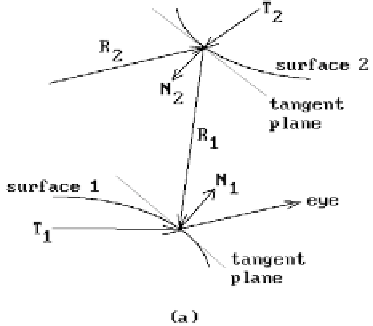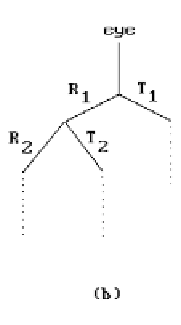Graphics Reference
In-Depth Information
Figure 9.12.
Basic ray tracing.
than that of the first medium, then q
2
is larger than q
1
. It is therefore possible for q
2
to become larger than 90°. In that case, the light is reflected and no light enters the
second medium. This phenomenon is referred to as
total internal reflection
and the
smallest angle q
1
at which this occurs is called the
critical angle
. Since sin q
2
has value
1 there, Snell's law shows that the critical angle is sin
-1
(n
2
/n
1
). Usually one is not inter-
ested in this angle and one only wants to know if total reflection has occurred, so that
one simply checks if the quantity under the square root sign in the formula for
T
is
negative.
9.4.3
Ray Tracing
Dealing with shadows and transparency handles the nonlocal property of illumina-
tion in only a very narrow way. There is a lot more interaction between objects. For
example, two glossy objects near one another reflect off each other. The models above
do not deal with this. Whitted ([Whit80]) is usually credited with implementing the
first comprehensive global illumination model. He suggested a recursive ray-tracing
algorithm, which can be represented as a tree. See Figure 9.12. One follows each com-
ponent ray and finds its intersection with all surfaces. Whitted used a formula of the
type
IrI rI rI rI
=+++,
aa
dd
ss
tt
where the new r
t
I
t
term models the transparency effects due to refraction. This worked
quite well. The next chapter will study ray tracing in detail and so we say no more
about it here. Ray tracing is
very
expensive computationally. Whitted used bounding
volumes (spheres) to eliminate objects with respect to whether a given ray intersects
it. He also incorporated antialiasing.
A lot of work has been done on ray tracing. Its best results can be seen in pictures
where there are lots of reflections between objects. The pictures are not totally real



